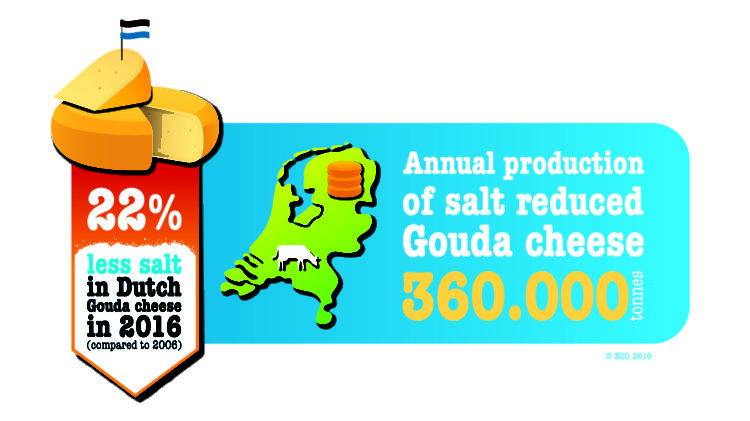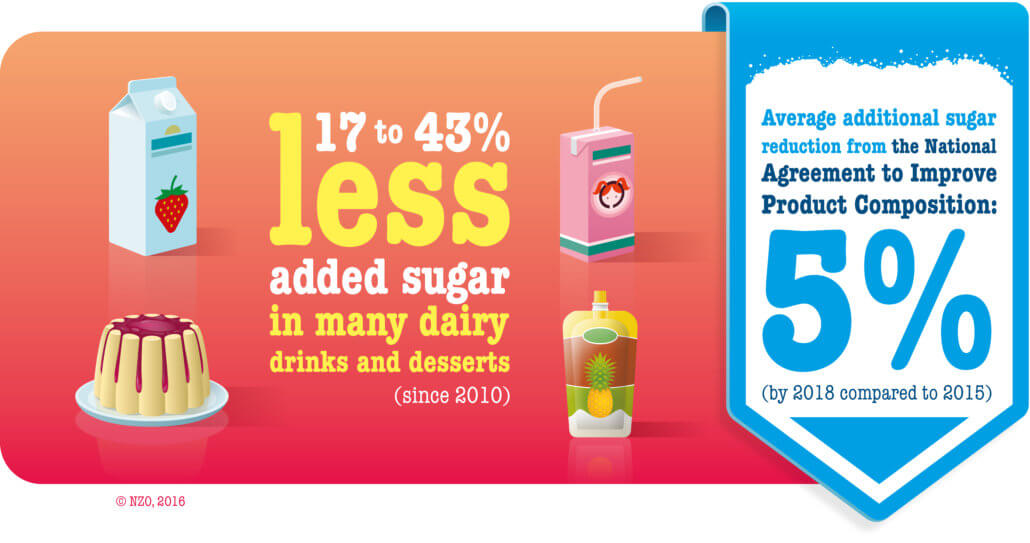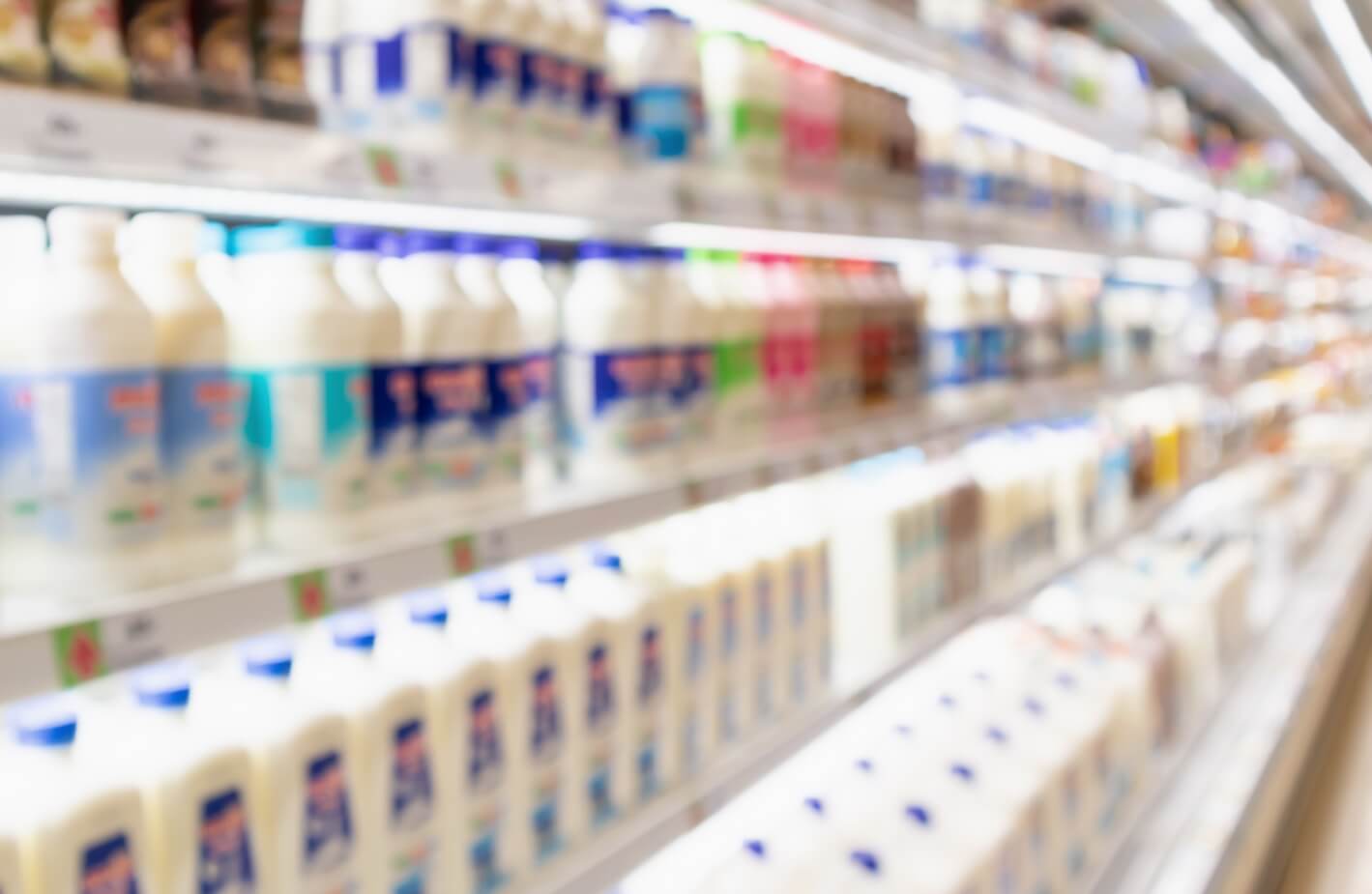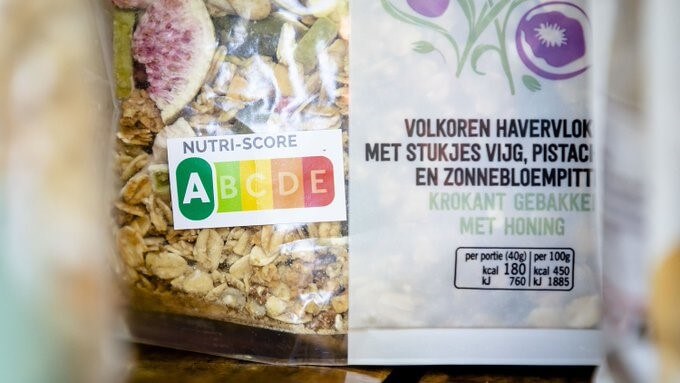
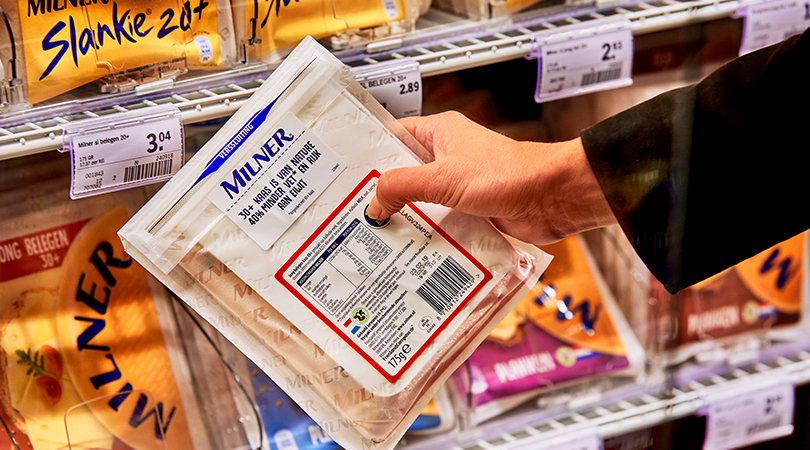
Product reformulation
The dairy sector is actively working to reduce salt and added sugar.
Read moreAs a source of nutrients like calcium, vitamins B2 and B12, vitamin A, and protein, dairy plays a key role in a healthy diet. But because it also covers many different kinds of products, from staples like milk, yogurt, and cheese to desserts and snacks, dairy also contributes a great deal to the average intake of added sugar, saturated fat, and salt. The dairy sector is therefore actively working on product reformulation.
One of the ways food manufacturers can help address obesity is to change how products are made. The Dutch dairy industry is working to lower the amounts of salt in cheese and of added sugar in dairy beverages and desserts. Since 2006, Dutch cheese producers have been able to gradually and significantly reduce the amount of salt in Gouda 48+ cheese. In 2010, the dairy sector began to gradually reduce the amounts of added sugar in dairy beverages and desserts. And in 2018, the sector began to target the reduction of salt in cheese spreads.
Salt reduction in Gouda 48+ cheese
Between 2006 and 2016, the amount of salt in the most popular cheese in the Netherlands, Gouda 48+, was reduced by an average 22%. The amount of reformulated Gouda 48+ cheese totals 360,000 tons each year. The new standard for the amount of sodium in cheese is 687 milligrams of sodium per 100 grams of cheese. Independent audits are conducted at member cheese factories regularly to check whether their products comply with this standard.
The limits of salt reduction in Gouda 48+ cheese, however, have been reached. Any further reductions in the amount of salt would lead to unwanted consequences for food safety and quality. Salt plays an important role in the shelf life, stability, and flavor of cheese. For naturally ripened cheeses like Gouda, the quality and safety of the cheese must also be guaranteed at the end of the ripening period.
Reduction of added sugar in dairy beverages and desserts (2015-2021)
In 2015, the Dutch Dairy Association committed to sugar reduction between 2015 and 2018 as part of the Dutch National Agreement to Improve Product Composition. Its goal was to reduce the amount of added sugar in dairy beverages and desserts by an average 5% between January 1, 2015 and January 1, 2018. Products targeted were desserts like puddings and mousse treats, yogurt and quark (sometimes referred to as cottage cheese), vla (similar to custard), and flavored dairy beverages. In signing Prevention Agreement in 2018, the Dutch Dairy Association once again committed to reducing the amount of added sugar by another 5% between 2018 and 2021.
Before 2015, Dutch dairy companies had already taken measures to minimize the amount of added sugar in dairy beverages and desserts. Sugar amounts were always gradually reduced and were rarely substituted with artificial sweeteners. This allows consumers to continue to be able to choose between products with or without sweeteners. Gradual reduction is necessary so that consumers can get used to the new flavors, to prevent them from adding sugar themselves, and to keep them from switching to other products.
Salt reduction in cheese spreads
The amount of salt in cheese spreads will be reduced between 2018 and 2021. A proposal was submitted to the Scientific Advisory Committee of the Dutch National Agreement to Improve Product Composition in June of 2018. The Committee will evaluate the proposal in the second half of 2018. The goals are:
- In regular cheese spreads, the salt content will drop by an average 5.4% by applying a maximum of 1050 milligrams of sodium per 100 grams of spread.
- For diet spreads, the salt content will drop by an average 6.5% by applying a maximum of 850 milligrams of sodium per 100 grams of spread.
Products with less saturated fat
Thanks to the wide range of dairy products out there, consumers can choose products with lower amounts of saturated fats. This choice has been offered since the late ‘60s for products like milk and cheese. In the Netherlands, skim and low-fat dairy products are the most popular. Consumers can also choose cheeses with reduced fat content, from 10+ and 20+ to 30+ and 40+, each of which indicates the percentage of milk fat content.
For more information, see the report “Product reformulation in Dutch dairy”. Only available in Dutch.
